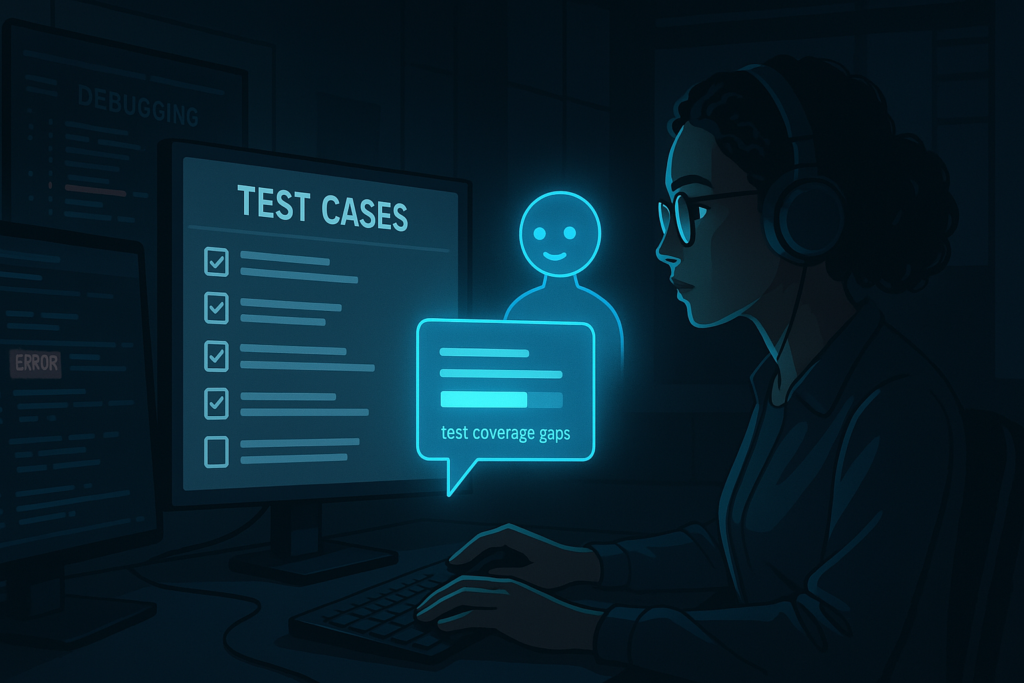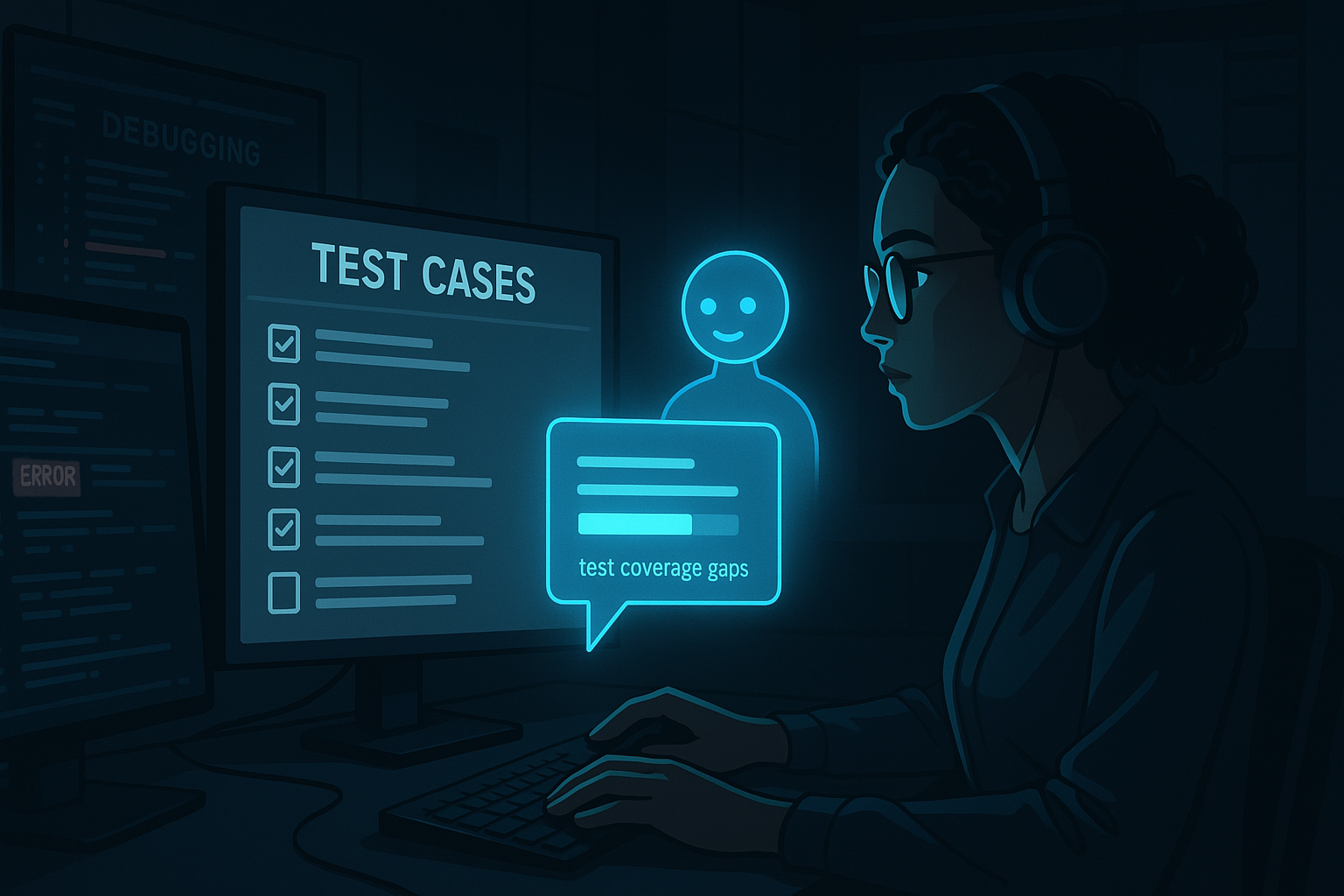
Introduction
Everyone loves to argue about manual vs. automation testing, but here’s what gets left out: AI can supercharge your manual testing too.
Yeah, you read that right. AI isn’t just for cranking out automated scripts or analyzing test coverage. Used right, it becomes your thinking assistant, helping manual testers become faster, smarter, and more focused.
This post isn’t theory. It’s what we’re actually doing in the trenches and it’s backed by lessons we’ve learned across projects, sprint failures, debugging nightmares, and actual QA decisions that shipped (or saved) real products.
1. Manual Testing Isn’t Dead — It’s Just Underestimated
In a world obsessed with automation dashboards and CI/CD pipelines, manual testing gets a bad rap. But when it comes to edge cases, sketchy UX flows, or a freshly delivered spaghetti code, nothing beats a good QA with good instincts.
Manual testers are the ones asking the uncomfortable questions:
- “What happens when the data is half-valid?”
- “What if the user refreshes mid-process?”
- “What if this breaks silently?”
We covered this mindset in Debugging in QA where AI wasn’t the hero, but a partner in the chaos.
So no, manual testing isn’t outdated. It’s just often unsupported.
2. How We Actually Use AI in Manual Testing
In practice, AI helps remove blockers so testers can spend more time thinking and less time babysitting vague tickets.
This goes beyond theory as we shared real patterns in Balancing Manual, Automation, and AI-Driven Testing and here’s how it plays out for us daily:
- Clarifying requirements: When a ticket sounds like lorem ipsum wrapped in Jira, we ask AI to break it down into testable assumptions.
- Generating test ideas: It won’t find gold, but it will remind you where not to dig blindly.
- Replaying or simulating bugs: Given a user complaint and some logs, AI can draft possible reproduction flows and we start from there.
- Assessing regression impact: AI can review module descriptions and help brainstorm affected areas (helpful when the dev team says, “It’s a small change”).
- Bug report polishing: We rough-draft the facts, AI helps us clean it up into something devs can’t ignore just like we emphasized in How to Write Effective Bug Reports.
3. The Pushback Is Weak Sauce
We’ve heard the complaints:
“That’s cheating.”
If using AI is cheating, so is using version control. Grow up.
“Manual testers should know this already.”
They do. But they also deserve better tools to move faster. This isn’t about knowledge. It’s about velocity.
“AI is unreliable.”
It’s not perfect — and neither are humans. But 70% helpful is 70% more than testers usually get from vague specs and rushed handoffs.
This is what we tried to untangle in Manual vs. Automation Testing – A QA Lead’s Perspective. It’s not a war. It’s a system of checks — and AI is another layer.
And if you’re wondering how badly over-relying on AI messes up developers, too you can read this breakdown. QA isn’t the only battlefield.
3.5. Where It Actually Worked and Where It Broke
These aren’t just theoretical wins. We’ve seen this go both right and wrong in real sprint chaos:
- One sprint, a tester went on sudden sick leave and I had to take over their backlog. With little time and scattered requirements, I used ChatGPT to break down user journeys and AC into test cases. That coverage saved the sprint.
- A newer tester used Gemini to analyze a screen capture and generate a Selenium test script with Python, then translated it into JavaScript. It wasn’t perfect, but it helped them understand automation faster than expected.
- But it’s not always smooth: one tester accidentally reused a prompt that tested the wrong scenario entirely. That bug slipped through, delayed the sprint by a week, and forced a rollback. Blind trust in AI cost us a release window.
So yes, AI is powerful but only if you treat it like an assistant, not an oracle.
4. Real Results We’ve Seen
We didn’t roll this out with a formal process. We just showed testers what’s possible and let the results speak:
- Exploratory sessions are twice as structured
- Reproduction steps are cleaner and repeatable
- Grooming discussions improved because testers ask smarter “what ifs”
- Bug reports started landing with context, not confusion
As we said in QA and the Future – AI, Automation, and Trends You Need to Watch — testers who learn to wield AI don’t just keep up, they lead.
Conclusion
This isn’t a debate about automation replacing testers. We’re long past that.
AI won’t make you obsolete but ignoring it might.
If your testers are still stuck manually copying test cases from one sheet to another, while buried in foggy tickets, you’re not doing QA you’re just surviving it.
Use AI as your QA sidekick, not your replacement.
The real edge isn’t AI vs. human.
It’s AI with human.
Try it. Break it. Tune it. And if you want to design smarter test flows using both happy and sad paths, revisit The Happy and Sad Path: Key Concepts in QA Testing.


2 thoughts on “AI-Assisted Manual Testing: The Hidden Power Combo Most QA Teams Ignore”
Comments are closed.